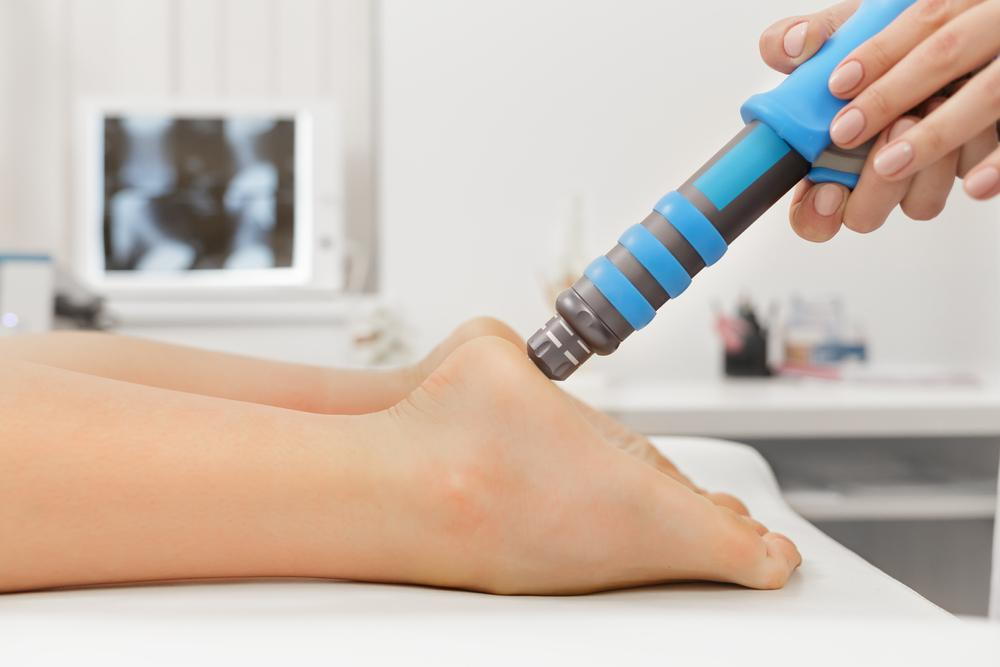Comparative Analysis: Shockwave Therapy vs. Traditional Treatments for Foot Pain
posted: Nov. 24, 2023.

Foot pain is a common ailment affecting many individuals, and as a podiatrist, it's crucial to provide effective treatments that alleviate pain and promote healing. In this blog, we will explore two different approaches to treating foot pain: shockwave therapy, an innovative treatment method, and traditional treatments that have been the cornerstone of podiatric care for years.
Traditional Treatments for Foot Pain
Traditional treatments for foot pain include a variety of methods such as physical therapy, orthotic devices, anti-inflammatory medications, and in some cases, surgery. These approaches have proven effective over the years and are often the first line of defense against foot pain.
Physical Therapy and Orthotics
Physical therapy exercises help strengthen foot muscles, improve flexibility, and reduce pain. Custom orthotics, on the other hand, provide support and correct the alignment of the foot, addressing the root causes of pain.
Medications and Injections
Non-steroidal anti-inflammatory drugs (NSAIDs) are commonly used to reduce inflammation and pain. For more severe cases, corticosteroid injections may be employed to provide temporary relief.
Surgical Intervention
In cases where conservative treatments fail, surgical intervention may be necessary to correct the underlying issue causing the pain.
Shockwave Therapy: A New Frontier in Foot Pain Treatment
Shockwave therapy, also known as Extracorporeal Shock Wave Therapy (ESWT), is a relatively new treatment that has gained attention in the field of podiatry. It involves the delivery of shock waves to the affected area, which stimulates healing and pain relief.
How Shockwave Therapy Works
Shockwave therapy uses acoustic waves that carry high energy to painful spots and musculoskeletal tissues. This energy promotes regeneration and reparative processes of the bones, tendons, and other soft tissues.
Benefits of Shockwave Therapy
Non-invasive: Unlike surgery, shockwave therapy is non-invasive, making it an attractive option for patients wary of surgical procedures.
No Need for Medication: This therapy reduces or even eliminates the need for medications, ideal for patients preferring a drug-free approach.
Quick and Effective: Patients often experience pain relief and improved mobility after just a few sessions.
Comparative Analysis
Efficacy
While traditional treatments are effective, they often address the symptoms rather than the cause of pain. Shockwave therapy, however, promotes natural healing processes, potentially offering a more lasting solution.
Recovery Time
Recovery time from traditional treatments, especially surgery, can be lengthy. Shockwave therapy, being non-invasive, typically allows patients to return to their normal activities much quicker.
Suitability
Not all patients are candidates for shockwave therapy. Those with certain medical conditions or pregnant women may need to rely on traditional treatments. Conversely, patients who have not responded well to traditional methods may find relief with shockwave therapy.
Cost-Effectiveness
Shockwave therapy can be cost-effective in the long run by reducing the need for ongoing treatment.
Conclusion
In conclusion, both shockwave therapy and traditional treatments have their place in treating foot pain. As a podiatrist, I believe in a patient-centered approach where the choice of treatment depends on the individual's specific condition, medical history, and personal preferences. For some, traditional methods may suffice, while for others, shockwave therapy could be the key to long-term relief. It's about finding the right balance and the most effective solution for each patient.
Remember, every foot is unique, and so is every treatment plan. If you're experiencing foot pain, it's important to consult with a qualified podiatrist who can guide you to the best treatment option for your specific needs.